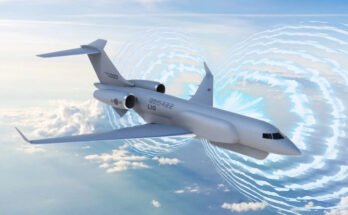Singapore’s Defense Minister Ng Eng Hen has announced on social media that upon completion of a technical evaluation by the Republic of Singapore Air Force (RSAF) and Defense Science and Technology Agency (DSTA), the Lockheed Martin F-35 has been selected as the next-generation fighter successor to the existing fleet of F-16s.
The announcement made on January 18 comes as little surprise. The RSAF currently operates a mix of American-sourced fighters and bases some of its F-15 and F-16s in the United States for pilot and crew training purposes. Military ties between the Republic of Singapore and the United States are close, and the F-35 has been viewed in many circles as a natural successor to the F-16.
Our F-16s will have to retire soon after 2030. Happy to report that DSTA and @TheRSAF have completed their technical evaluation, and decided that the F-35 would be the most suitable replacement fighter. We will procure a few planes first, before deciding on a full fleet. pic.twitter.com/0GlKlCXT4j
— Ng Eng Hen (@Ng_Eng_Hen) January 18, 2019
Singapore has followed the F-35 program since joining as an observer in 2004. The U.S. offered Singapore participation as a “Security Cooperation” participant (i.e., FMS customer) during the System Development and Demonstration (SDD) phase of the program, allowing it access to project briefings and enabling Singapore to place advance orders, for the modest cost of $24 million.
A cornerstone of Singaporean defense and security policy is the need to project power and leverage its military-technological edge as a useful deterrent against possible foes, both near and abroad. The addition of the F-35 would aid this requirement while providing the RSAF with a platform capable of operating alongside its strategic allies in the U.S. and Australia.
With China continuing to press its territorial claims in the South China Sea and its military developing its own advanced stealth fighters, Singapore undoubtedly considers an F-35 acquisition as matching the improvements undertaken by a potential rival.
The caveat in Ng Eng Hen’s announcement is that the technical evaluation undertaken by the RSAF and DSTA concluded that only a small number of F-35s should be purchased in order to undertake a full evaluation of the fighters and determine their suitability prior to procuring a full allotment.
In other words, this is a cautionary approach involving a purchase, fly and evaluate process seen as necessary before undertaking such a costly acquisition.
The Defense Minister also noted that Singaporean agencies now must discuss with their American counterparts how best to move forward on such an acquisition – a process expected to take up to 9 to 12 months before a final decision is reached.
Singapore traditionally holds its defense plans close to the vest. When it undertakes a procurement program it does so in careful, incremental fashion.
Thus the determination to take a measured, detailed appraisal of the Joint Strike Fighter is less unusual than the “small-batch purchase-to-test” approach bypassed by a nation such as Israel, often seen as the model relatively emulated by Singapore in building a strong military with a limited manpower pool.
Also of note is that the Defense Ministry failed to disclose which F-35 variant it plans to acquire for the final evaluation period.
The F-35 “B” short takeoff and vertical landing (STOVL) variant makes sense for Singapore due to its limited land area and thus its vulnerability to enemy air strikes and missile/rocket strikes on its runways.
The STOVL capability would eliminate the need to line up aircraft on an airfield, instead allowing the RSAF the ability to disperse its fleet rather than subject the aircraft to being hit on the ground or rendered inoperable due to damage to its runways. For these jump-jets, only limited runway capacity is needed.
Dan Darling is Forecast International’s director of military and defense markets. In this role, Dan oversees a team of analysts tasked with covering everything from budgeting to weapons systems to defense electronics and military aerospace. Additionally, for over 17 years Dan has, at various times, authored the International Military Markets reports for Europe, Eurasia, the Middle East and the Asia-Pacific region.
Dan's work has been cited in Defense News, Real Clear Defense, Asian Military Review, Al Jazeera, and Financial Express, among others, and he has also contributed commentary to The Diplomat, The National Interest and World Politics Review. He has been quoted in Arabian Business, the Financial Times, Flight International, The New York Times, Bloomberg and National Defense Magazine.
In addition, Dan has made guest appearances on the online radio show Midrats and on The Media Line, as well as The Red Line Podcast, plus media appearances on France 24 and World Is One News (WION).




